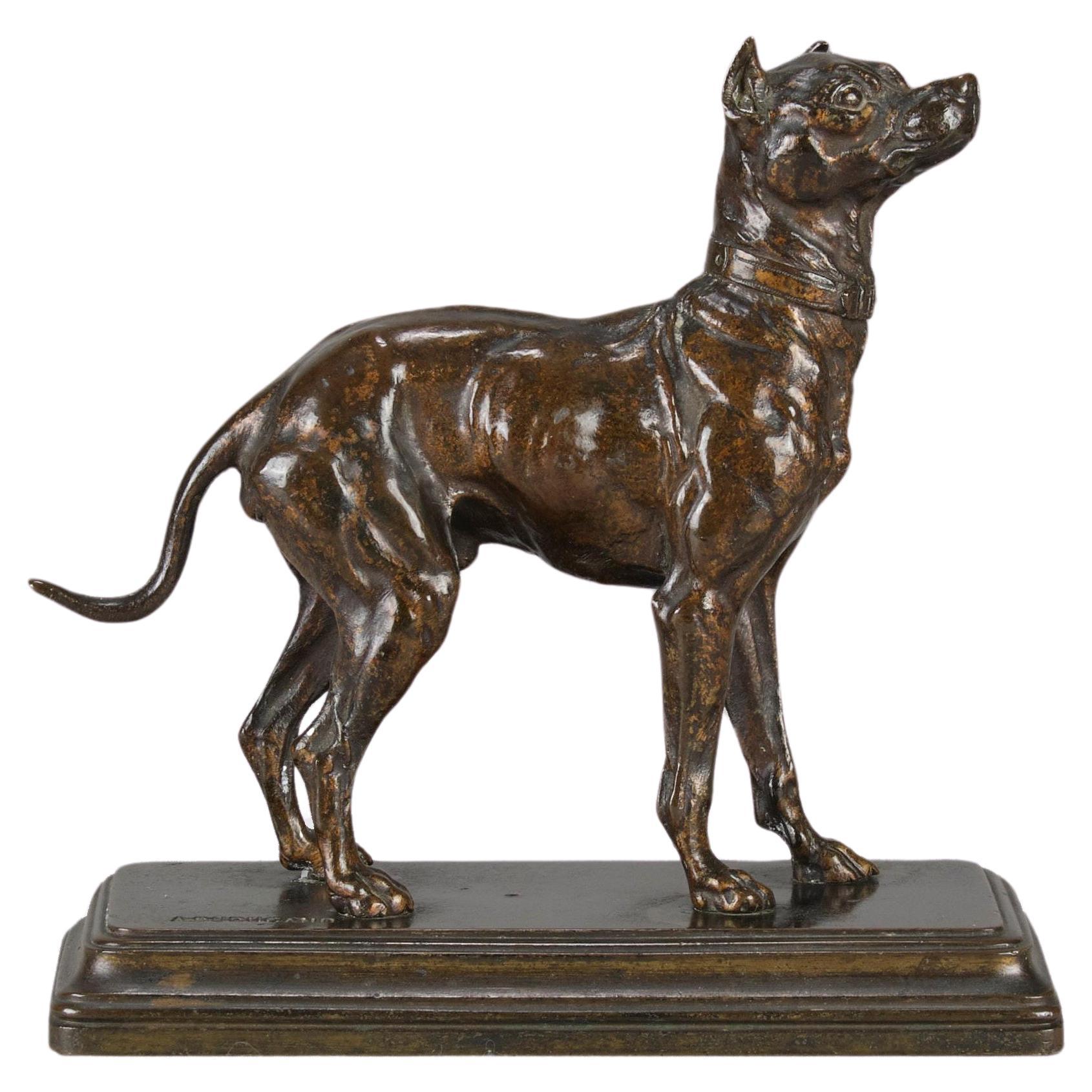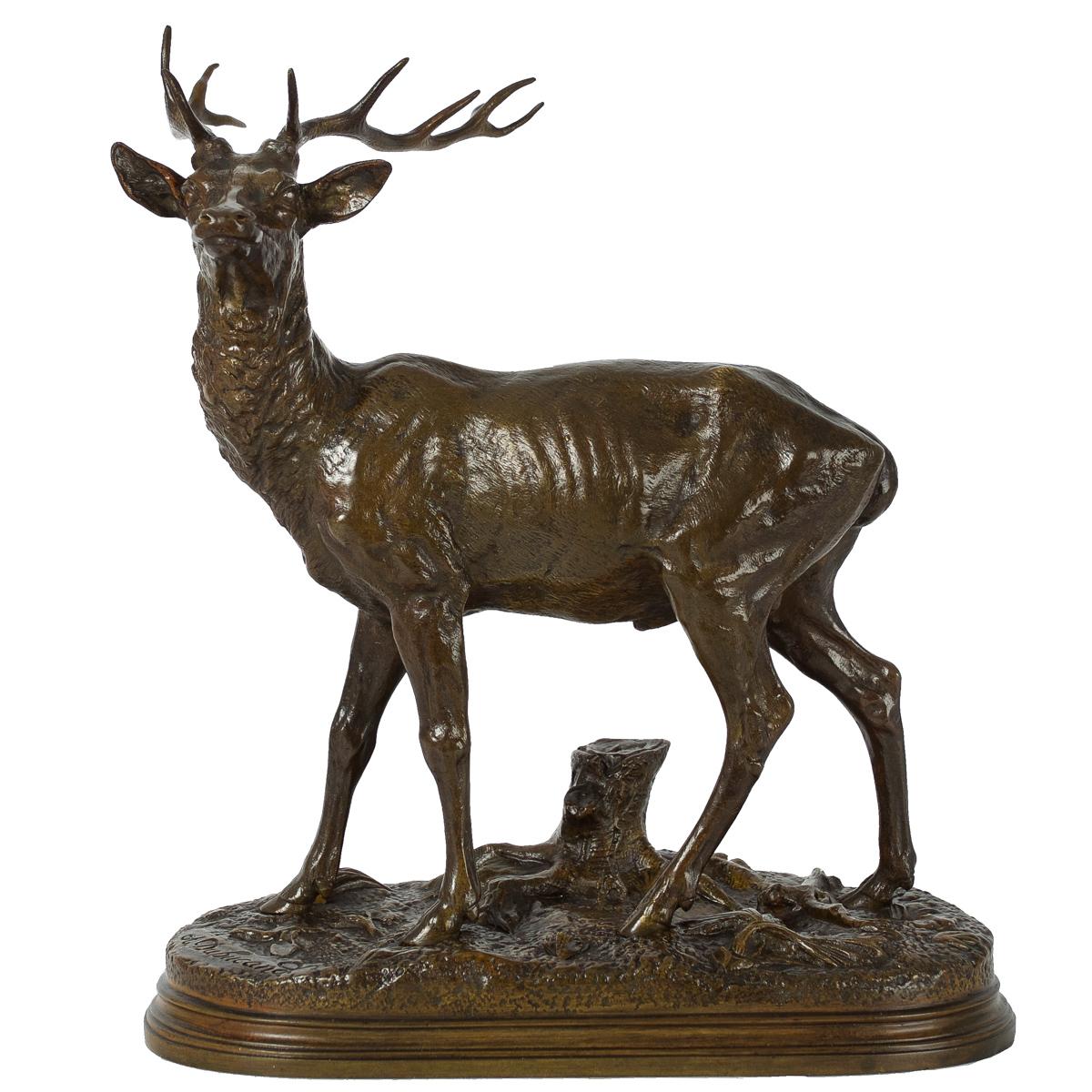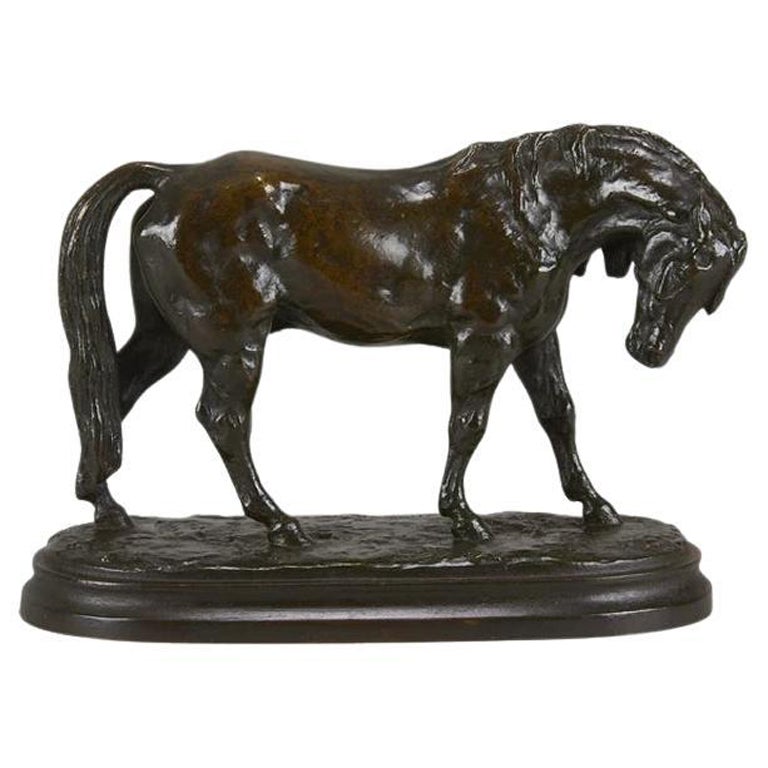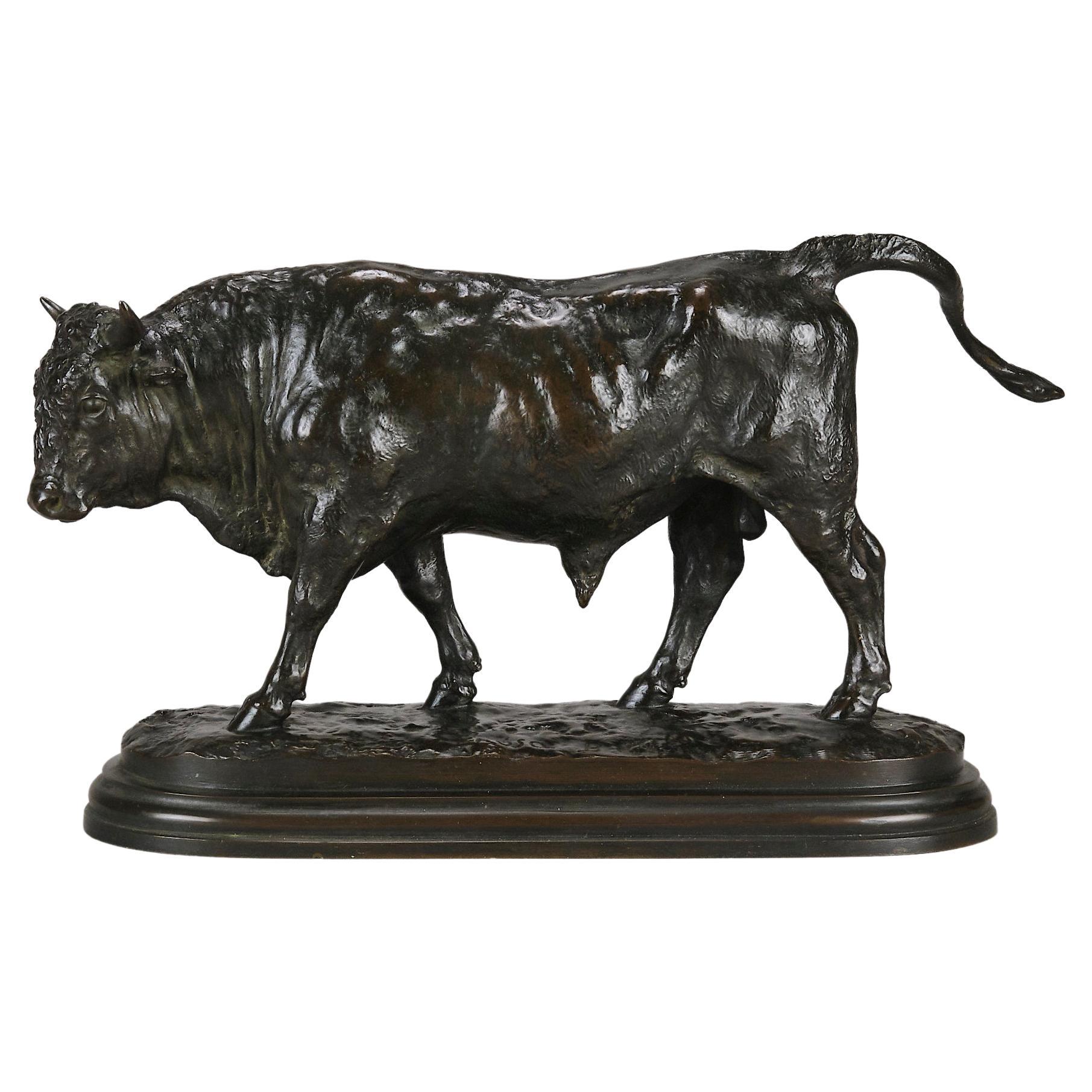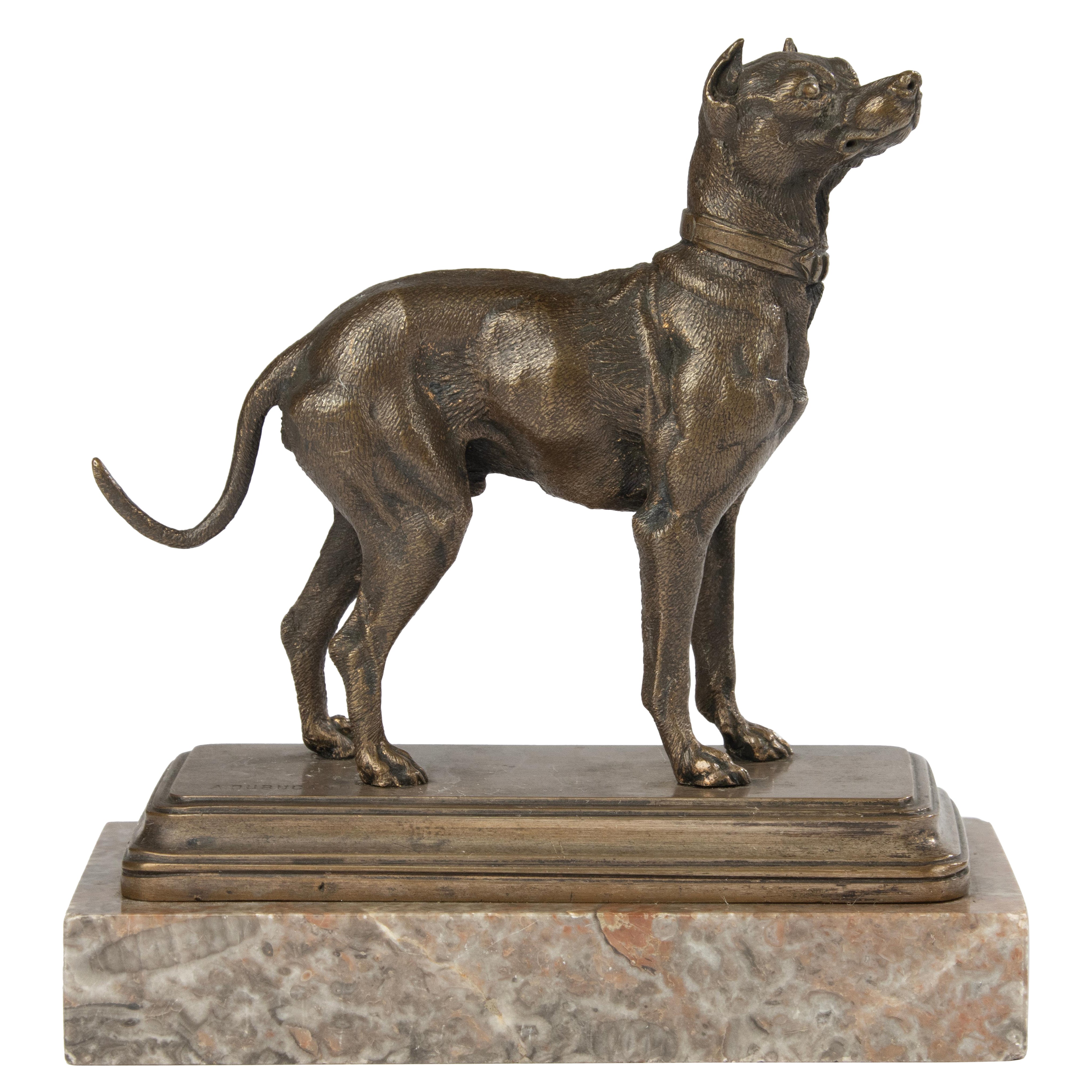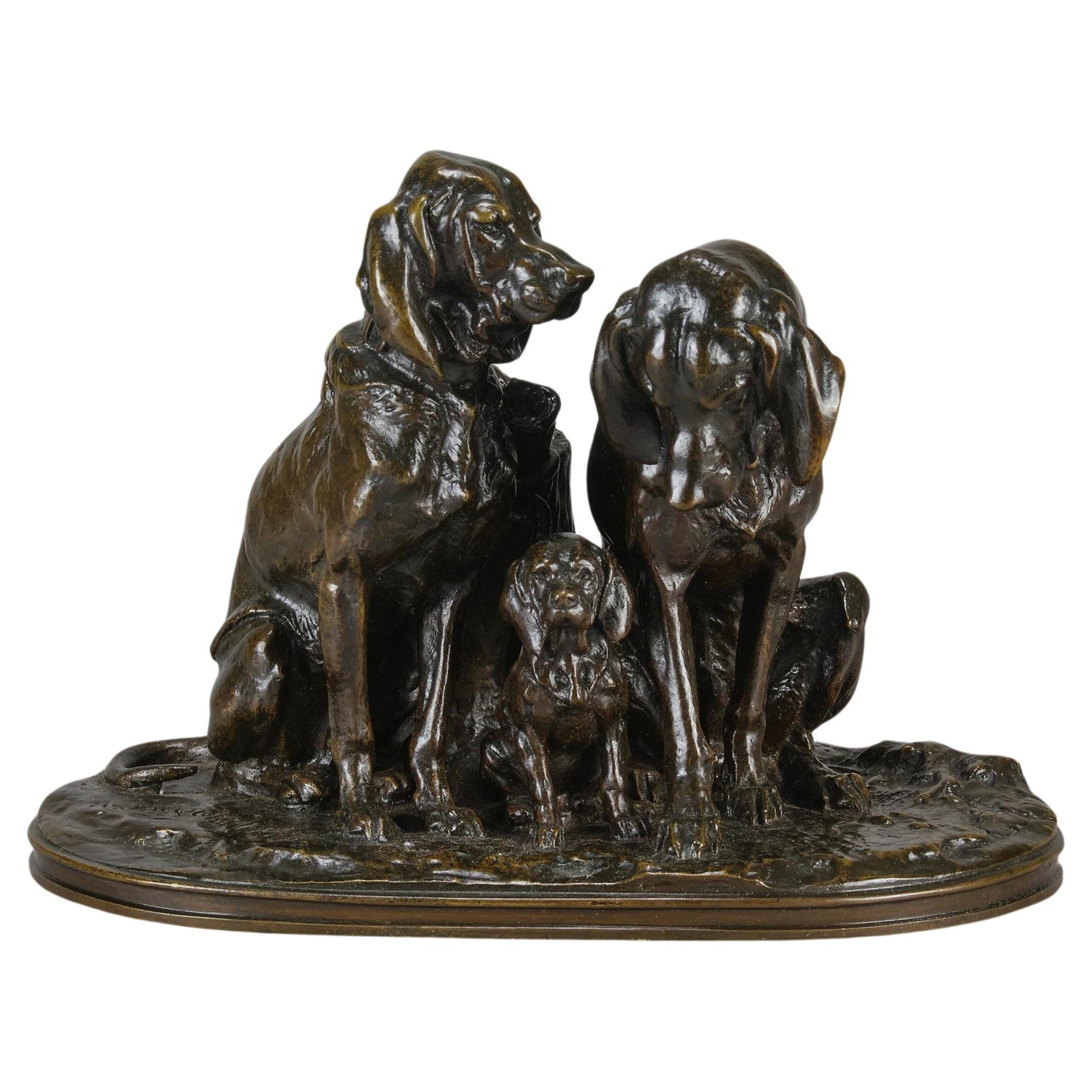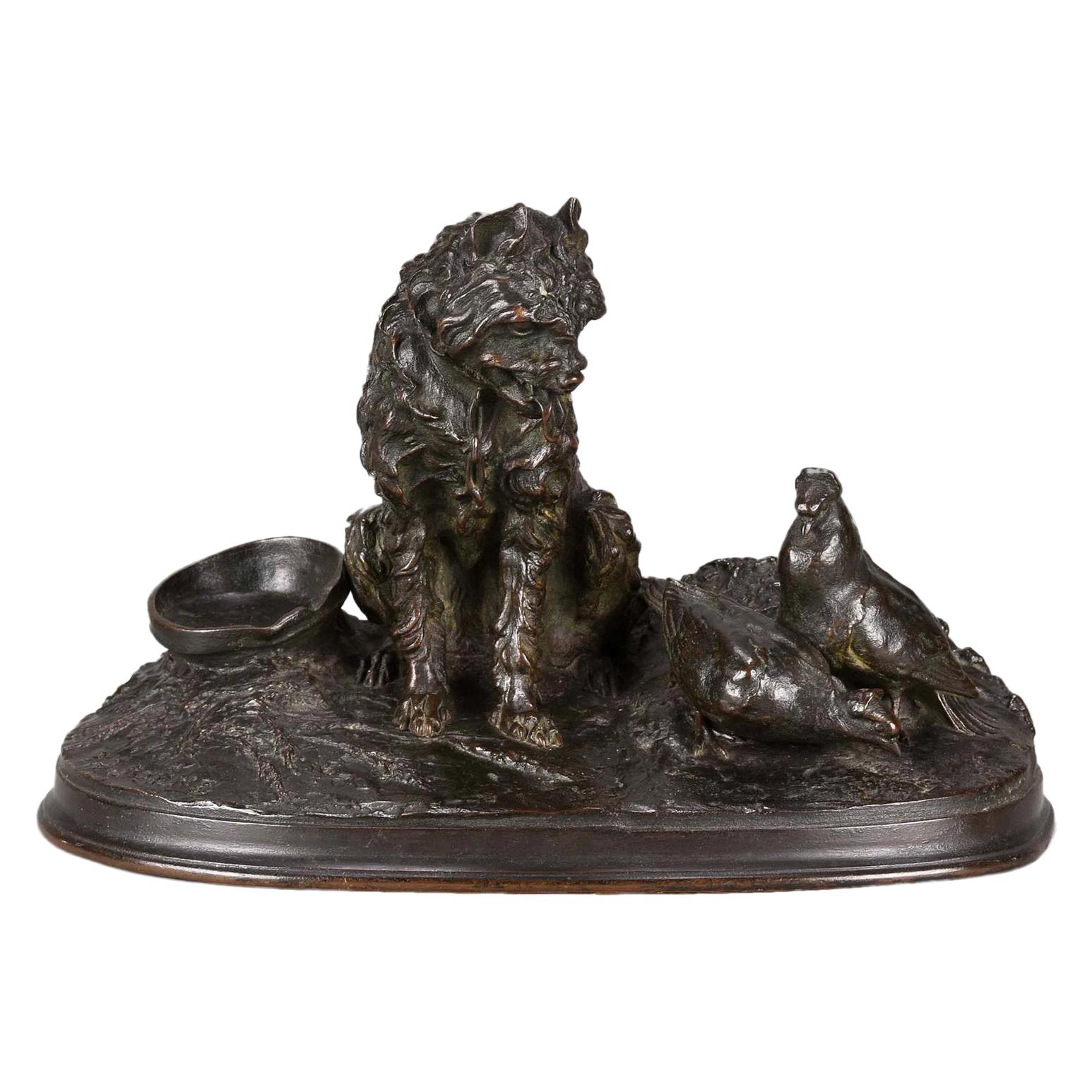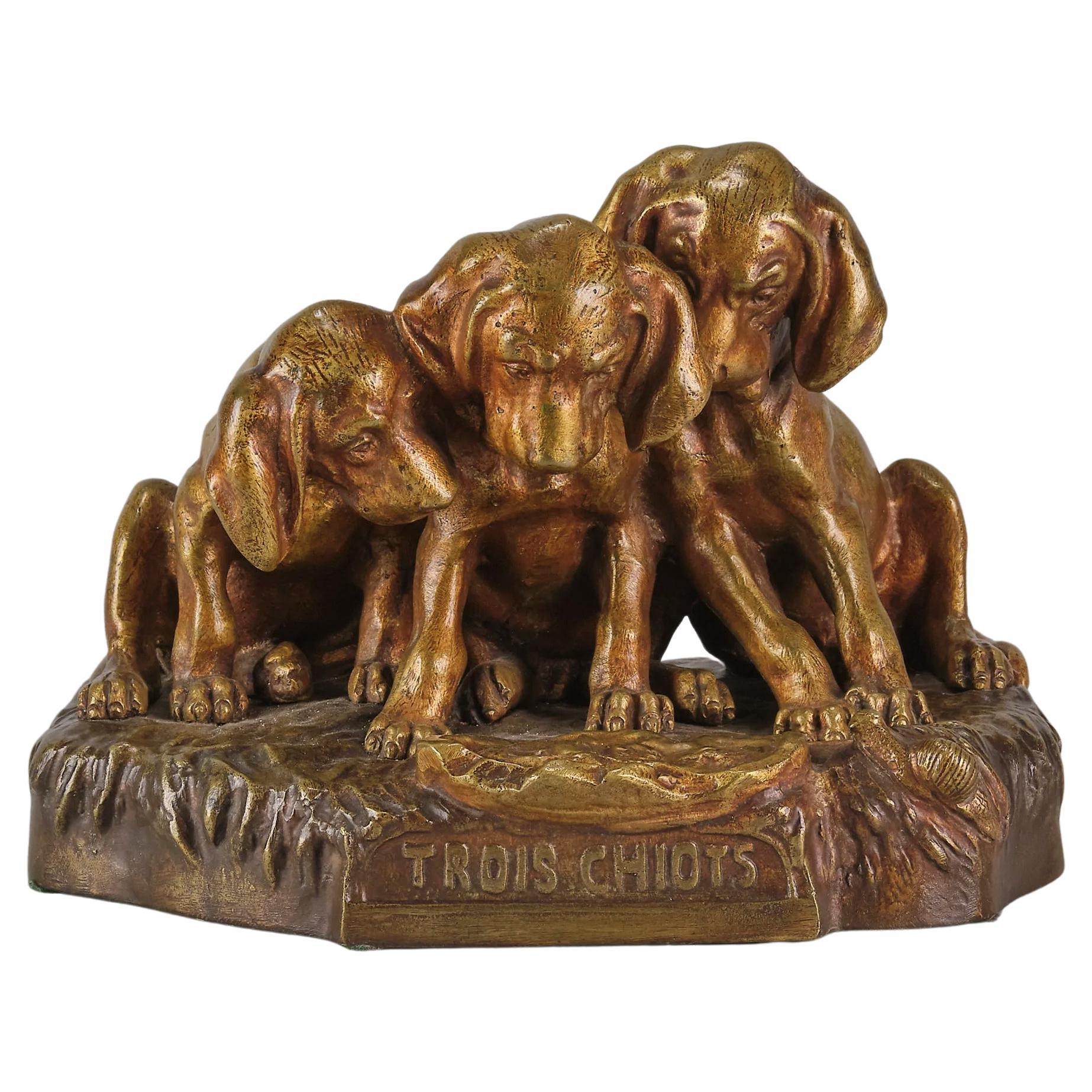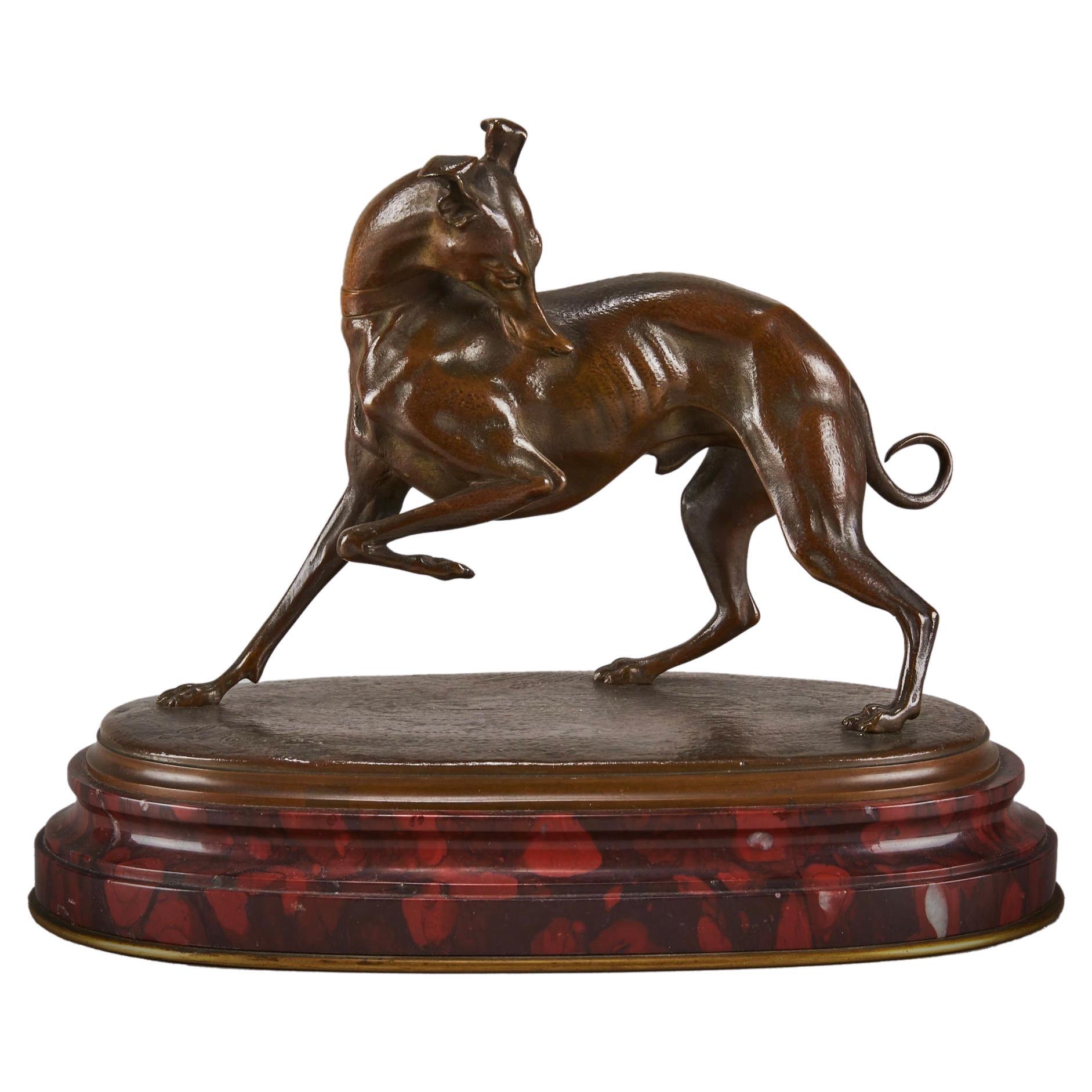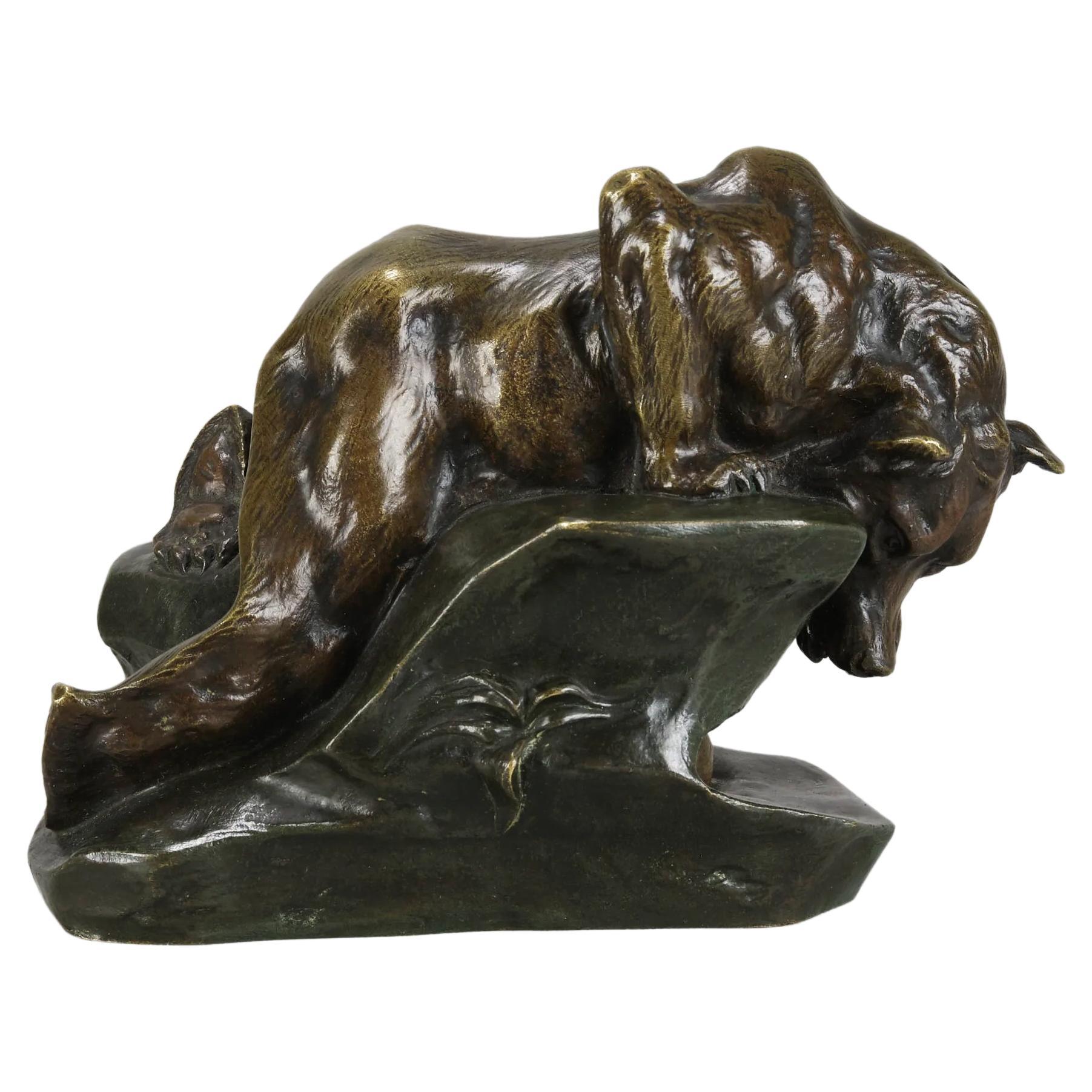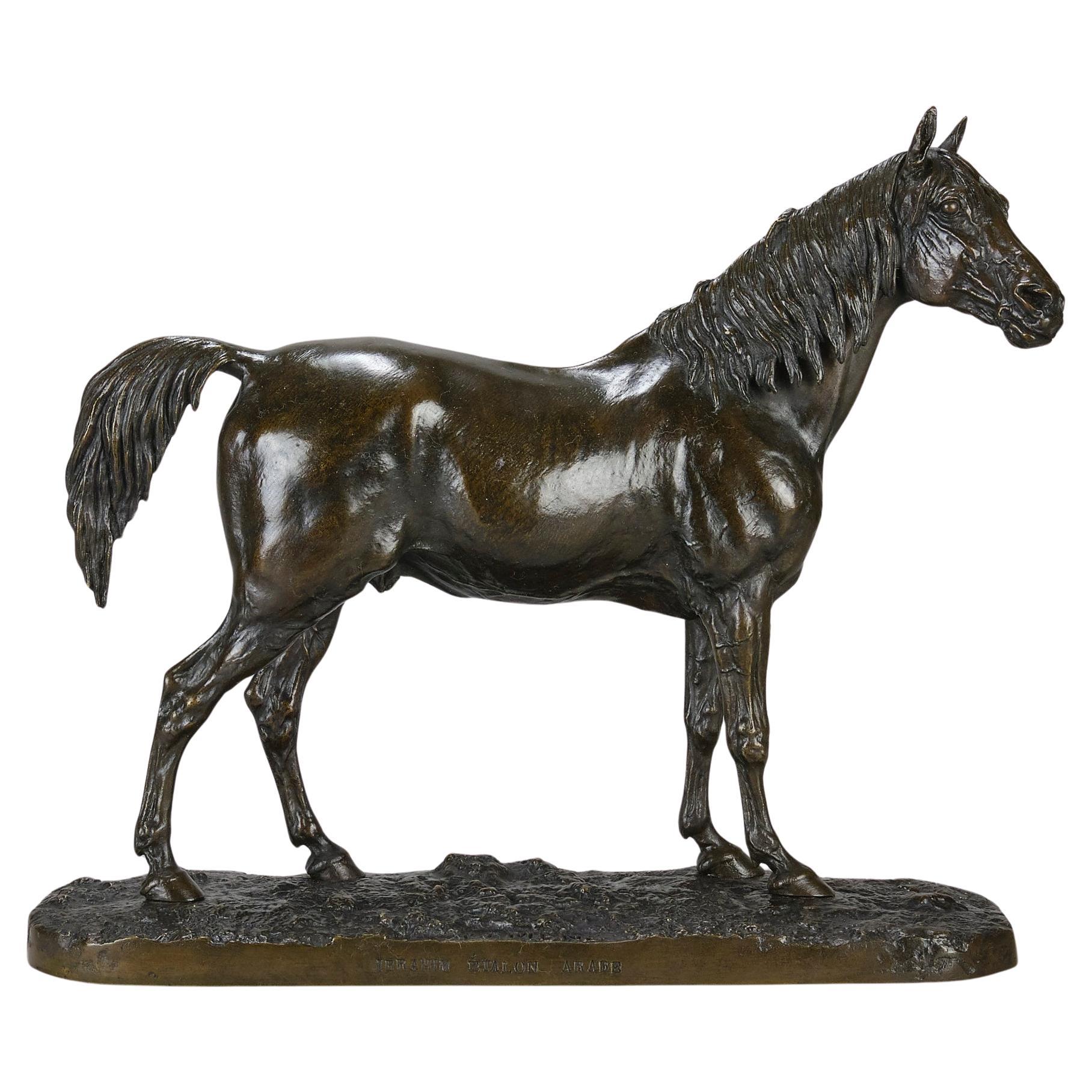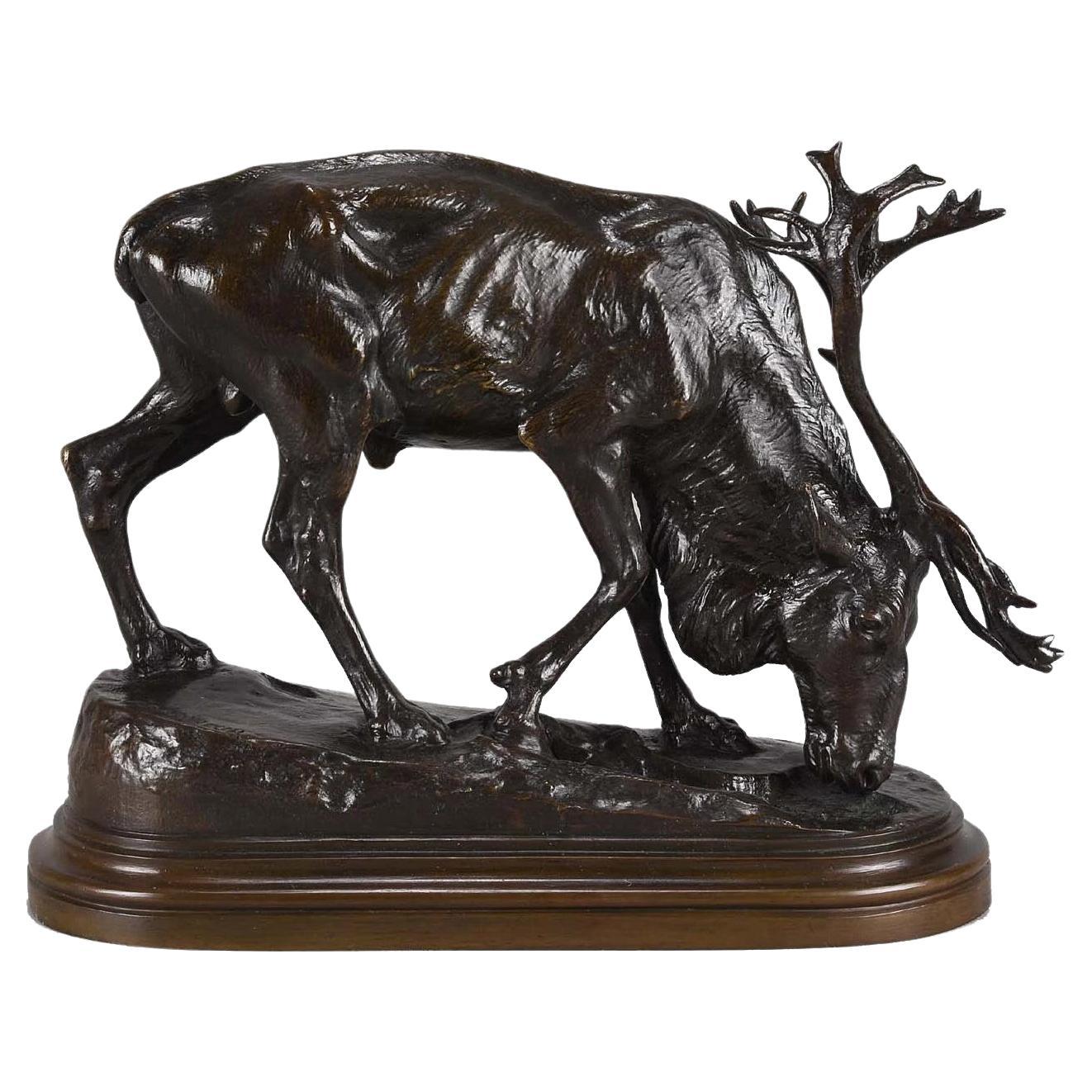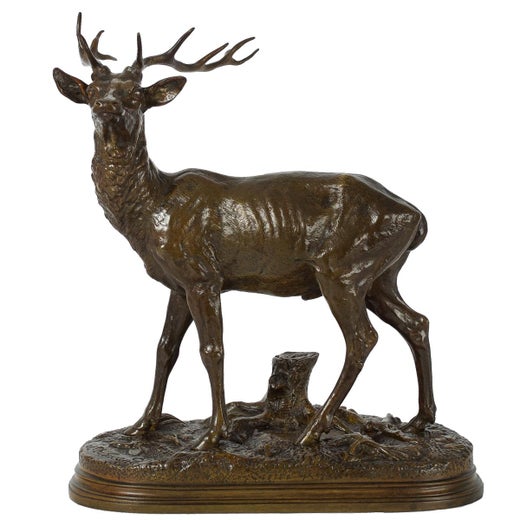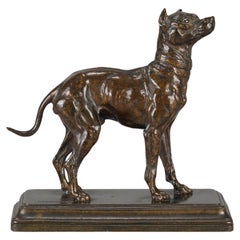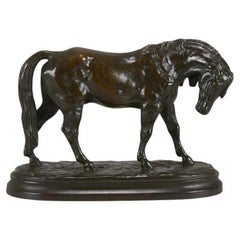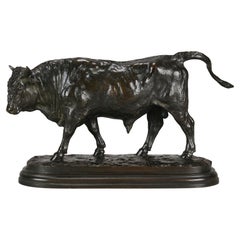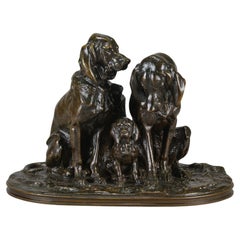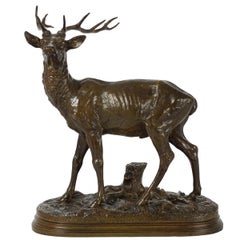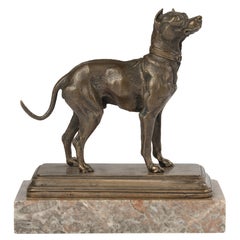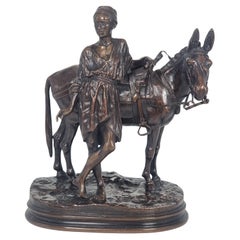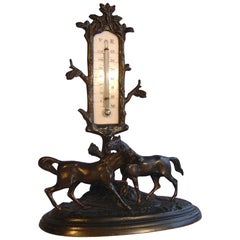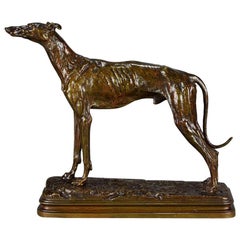
French Animalier Bronze Entitled "Lèvrier Debout" by Alfred Dubucand
View Similar Items
French Animalier Bronze Entitled "Lèvrier Debout" by Alfred Dubucand
About the Item
- Creator:Alfred Dubucand (Sculptor)
- Dimensions:Height: 14.18 in (36 cm)Width: 12.21 in (31 cm)Depth: 0 in (0.01 mm)
- Style:Other (Of the Period)
- Materials and Techniques:Bronze,Cast
- Place of Origin:
- Period:
- Date of Manufacture:1885
- Condition:Wear consistent with age and use. Excellent Original Condition Please note that our items are genuine antiques with considerable age. It is therefore normal that they will show some signs of wear and handling to the surface.
- Seller Location:London, GB
- Reference Number:Seller: SKU 76511stDibs: LU3216312458993
Alfred Dubucand
Alfred Dubucand, Born in Paris on November 25th of 1828. Dubucand studied under Justin Marie Lequien (French, 1796–1881) and later under Antoine-Louis Barye. He worked almost exclusively as an animal sculptor or "Animalier", though he was very familiar with capturing the human element in his Equestrian and portrait groups; some of his most successful works were his studies of French-occupied North Africa and his Eastern nomadic subjects, these often hunt scenes with horse and rider, sometimes accompanied by domestic dogs. His bronzes are always exceptionally well-detailed with special attention shown to the patina, a skillset he learned from Barye; his early works are often characterized by more complex and varied chemical patination. In 1867, his wax model of Dead Pheasant was exhibited for his debut at the Paris Salon. Dubucand continued to exhibit his juried works at Salon every year through 1883, these often exhibited as wax models and sometimes plaster that subsequently were cast in bronze. His exhibitions must have been rather well received, as much of his work first presented in wax was in later years again exhibited at Salon cast in bronze.
More From This Seller
View AllAntique Early 19th Century French Art Nouveau Animal Sculptures
Bronze
Antique Late 19th Century French Victorian Animal Sculptures
Bronze
Antique 19th Century French Art Nouveau Animal Sculptures
Bronze
Antique Late 19th Century French Art Nouveau Animal Sculptures
Bronze
Antique 1870s French Other Animal Sculptures
Bronze
Early 20th Century French Art Nouveau Animal Sculptures
Bronze
You May Also Like
Antique 19th Century French Romantic Animal Sculptures
Bronze
Antique Mid-19th Century French Napoleon III Animal Sculptures
Marble, Bronze
Antique Late 19th Century French Napoleon III Figurative Sculptures
Bronze
Antique 1840s French Grand Tour Animal Sculptures
Bronze
Antique 1880s French Animal Sculptures
Bronze
20th Century European Sporting Art Animal Sculptures
Marble, Bronze
